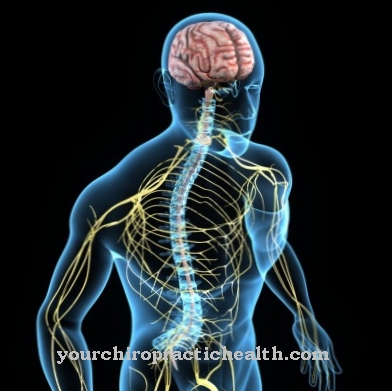The Psychosurgery is a term for an operation on the human brain. The aim is to alleviate or cure a mental illness. It is a fine and targeted intervention in the brain tissue.
What is psychosurgery?
Psychosurgery found its origin almost 100 years ago. When doctors realized that mental illnesses were caused by disorders in certain areas of the brain, the first interventions began.
In 1930 the first techniques were used to change various mental illnesses through an intervention in the human brain. The aim is to destroy damaged brain tissue and thus to improve the state of health. As one of the first procedures, the lobotomy became known worldwide. This very controversial method was introduced in the post-war period and received the Nobel Prize at that time. Cutting nerve tracts should cure serious mental illness.
Unfortunately, the side effects are very dramatic and are often associated with severe disabilities for life. For this reason it is not used. Instead, researchers have drawn the appropriate conclusions and refined their techniques. Modern psychosurgery consists of small and very fine interventions. Usually probes, electric shocks or laser irradiation are used to reduce or heal psychological ailments or stressful states. Cuts in the brain tissue are made carefully and very carefully so as not to damage the healthy tissue.
Function, effect & goals
Psychosurgery distinguishes irreversible from reversible procedures. In the irreversible methods, tissue is removed or severed. Regeneration is no longer possible and symptoms of failure in the affected region occur.
A painful condition is often eliminated with such an intervention and no longer occurs. Nevertheless, it must be checked in advance whether other functions will also fail permanently. Since this happens often, the focus of psychosurgery is increasingly placed on the reversible methods. With the reversible methods, subtle surgical interventions, psychotropic drugs or other stimulation methods are usually used. The stimulation methods include the administration of electric shocks or hormones. As soon as the stimulants are discontinued, however, the symptoms usually return. Psychosurgery in its operative form is used to separate damaged brain tissue from healthy. This poses a great challenge.
It is not easy for medical professionals to separate only diseased cells from healthy ones. Therefore, the surgical procedure is a very demanding and responsible method. The work takes place in the brain with primarily probes or lasers in order to avoid damage. Different measurement and control methods are often used during an operation in order to be able to make fine adjustments. In the new development, the patient is fully conscious during an operation despite local anesthesia. He has to answer certain questions or perform tasks so that the doctor can precisely control his steps. This helps to make a targeted separation between healthy and diseased tissue.
An immediate change in the procedure is made possible and damage is reduced. This shows the probability of success and has a very good response. An area of the brain often has several functions. Since the research of the brain has not yet been completed despite many efforts, psychosurgery with its fine tools enables the lowest possible failures of other systems. Psychosurgery focuses on diseases such as obsessive-compulsive disorder, panic attacks, Klüver-Bucy syndrome or epilepsy. In addition, schizophrenia, Parkinson's disease or severe behavioral problems are also among the areas of application.
In the treatment of Tourette's syndrome or in severe depression, psychosurgery has been achieving good results for several years. For both diseases, patients are treated with electrical pulse generators. Light electrical surges provide deep brain stimulation, which often leads to an improvement in the state of health. Since the success of the targeted work on the brain is steadily increasing, the areas of application of psychosurgery have been expanding steadily in recent years. The focus is increasingly on all diseases or abnormalities that are associated with changed behavior, a conspicuous personality or a difficulty in processing emotions.
You can find your medication here
➔ Medicines for painRisks, side effects & dangers
Psychosurgery is a procedure that can have many side effects. The tissues in the brain are particularly susceptible to lesions. In addition to tissue, blood and nerve tracts can also be damaged during an intervention. Many venous blood vessels run in the human brain.
The walls of the vessels are particularly thin and therefore very susceptible to damage. Bleeding in the brain can result in a stroke. These can cause lifelong impairments through paralysis or movement disorders. In addition, they can have a fatal outcome. The functions in the human brain have been well researched over the past few decades. Great progress has been made. In this way, the researchers gained important knowledge about the areas in which certain evaluations are carried out. Despite all the progress, not all questions have been answered to this day.
There are still many hypotheses and conjectures that experiments on living people cannot be carried out in an uncontrolled manner for ethical reasons. As a result, some areas have clear task assignments and lesions have corresponding failures. This is the case, for example, with the auditory or visual system. However, other regions have different roles and work with multiple systems. This is the case, for example, with memory formation or the retrieval of knowledge and learned skills.













.jpg)

.jpg)
.jpg)











.jpg)